The Albino Koi Guppy is a special and beautiful fish that many people love to keep in their aquariums. This fish is known for its bright and colorful appearance. The body of the Albino Koi Guppy is mostly white, which makes it look unique. It also has bright red and orange spots that make it look like a koi fish, which is a famous type of fish from Japan.
Albino Koi Guppies are small and usually grow up to 1.5 to 2 inches long. They have long, flowing tails that add to their beauty. These fish are peaceful and friendly, making them great for community tanks where they can live with other small and gentle fish.
Taking care of Albino Koi Guppies is easy. They can live in different types of water conditions and are not very picky about their food. They eat flake food, small pellets, and even live or frozen food like brine shrimp and daphnia. With proper care, these fish can live up to 2-3 years.
How Much Does an Albino Koi Guppy Cost?
Albino Koi Guppies usually cost between $3 to $10 at pet stores and $5 to $15 online, not including shipping. Buying from breeders can cost $10 to $20 per fish. Remember, there are extra costs like shipping ($15 to $50) and setting up a tank ($100 to $200).
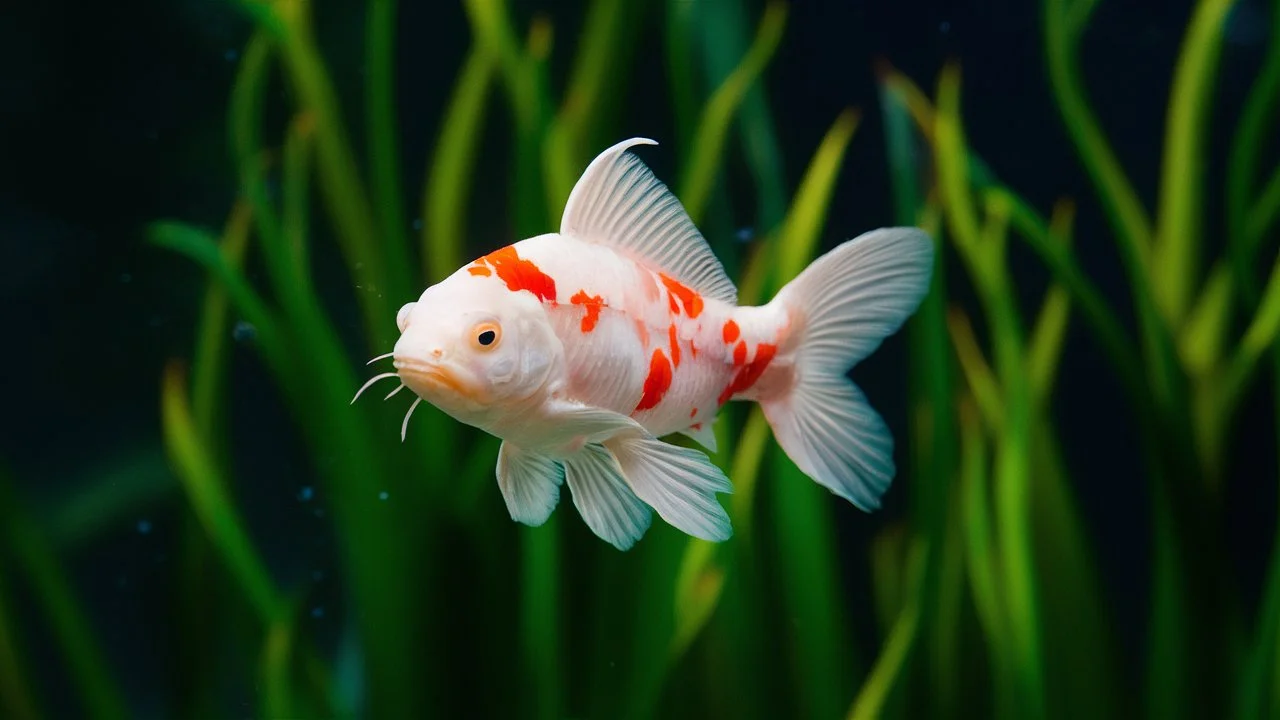
Monthly care, including food and supplies, costs around $10 to $20. To get healthy fish, research sellers, check the fish’s health, and quarantine new arrivals to prevent disease. Buying in bulk might save money. With a bit of research, you can find affordable, healthy Albino Koi Guppies for your tank.
How Long Do Albino Koi Guppies Live?
Albino Koi Guppies usually live for about 2 to 3 years. This is the normal lifespan for most guppies, including the Albino Koi variety. With good care, some of them might live a bit longer.
Related reading: Mosaic Guppy cost: Lifespan, food, Breeding & Health
Factors That Affect Their Lifespan
Several things can affect how long an Albino Koi Guppy lives:
- Water Quality: Clean water is very important for guppies. You should change the water in the tank regularly and make sure it is free from harmful chemicals. This helps your guppies stay healthy and live longer.
- Diet: Feeding your guppies the right food is crucial. They need a mix of flake food, small pellets, and sometimes live or frozen food like brine shrimp or daphnia. A balanced diet helps them stay strong and healthy.
- Tank Conditions: The tank should have the right temperature and pH level. Albino Koi Guppies need a comfortable and safe environment to live in. The tank should also be big enough for them to swim around freely.
- Stress Levels: It’s important to keep the tank peaceful. Avoid adding too many fish to the tank, as overcrowding can lead to various issues. Stressed fish are more likely to get sick and might not live as long.
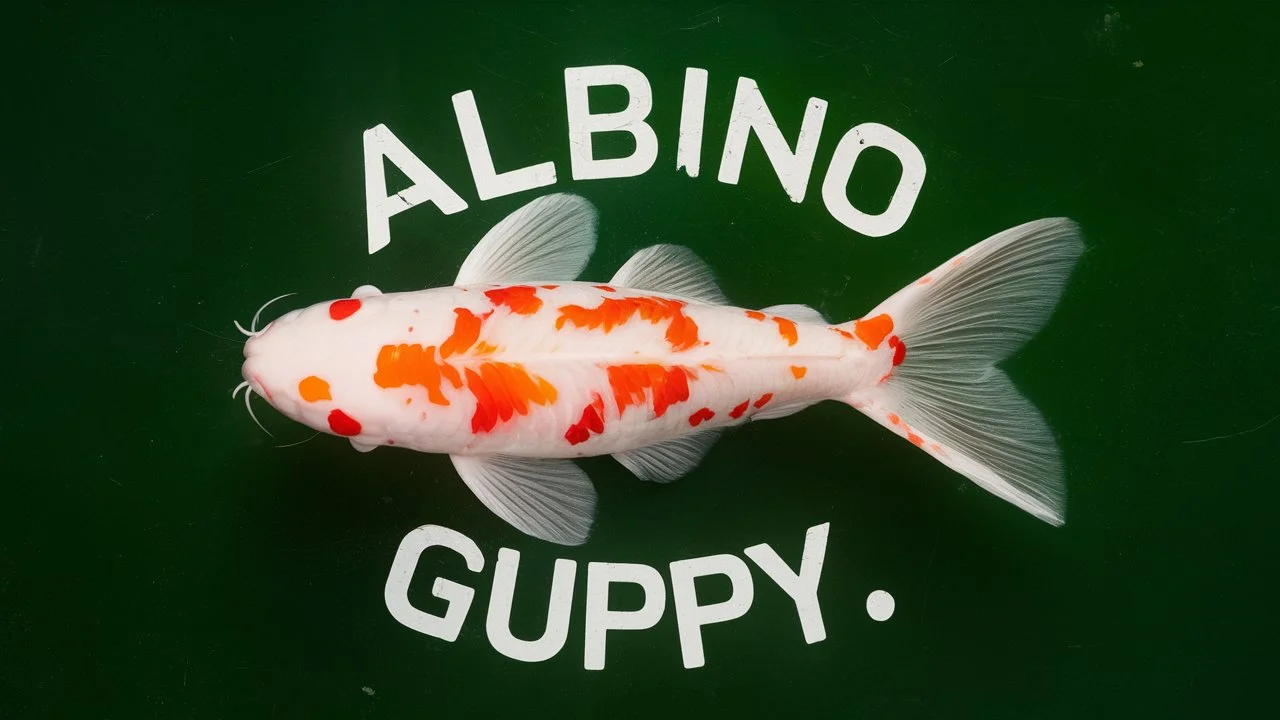
Tips to Help Them Live Longer
Here are some easy tips to help your Albino Koi Guppies live a long and happy life:
- Regular Water Changes: Change 20-30% of the tank water every week. This ensures the water remains clean and healthy for your fish.
- Balanced Diet: Feed your guppies a variety of foods. This ensures they get all the nutrients they need to grow and stay healthy.
- Proper Tank Maintenance: Keep the tank clean. Check the water conditions regularly to make sure they are just right for your guppies.
- Avoid Overcrowding: Make sure your guppies have enough space to swim around. Too many fish in one tank can cause stress and lead to health problems.
By following these simple steps, you can help your Albino Koi Guppies live a healthy and happy life for as long as possible. Taking good care of their water, diet and environment will ensure they thrive and bring joy to your aquarium.
Choosing the Right Fish Food for Albino Koi Guppies
Feeding your Albino Koi Guppies the right food is very important. A good diet helps them stay healthy, colorful, and active. Here are some tips to help you choose the best food for your guppies.
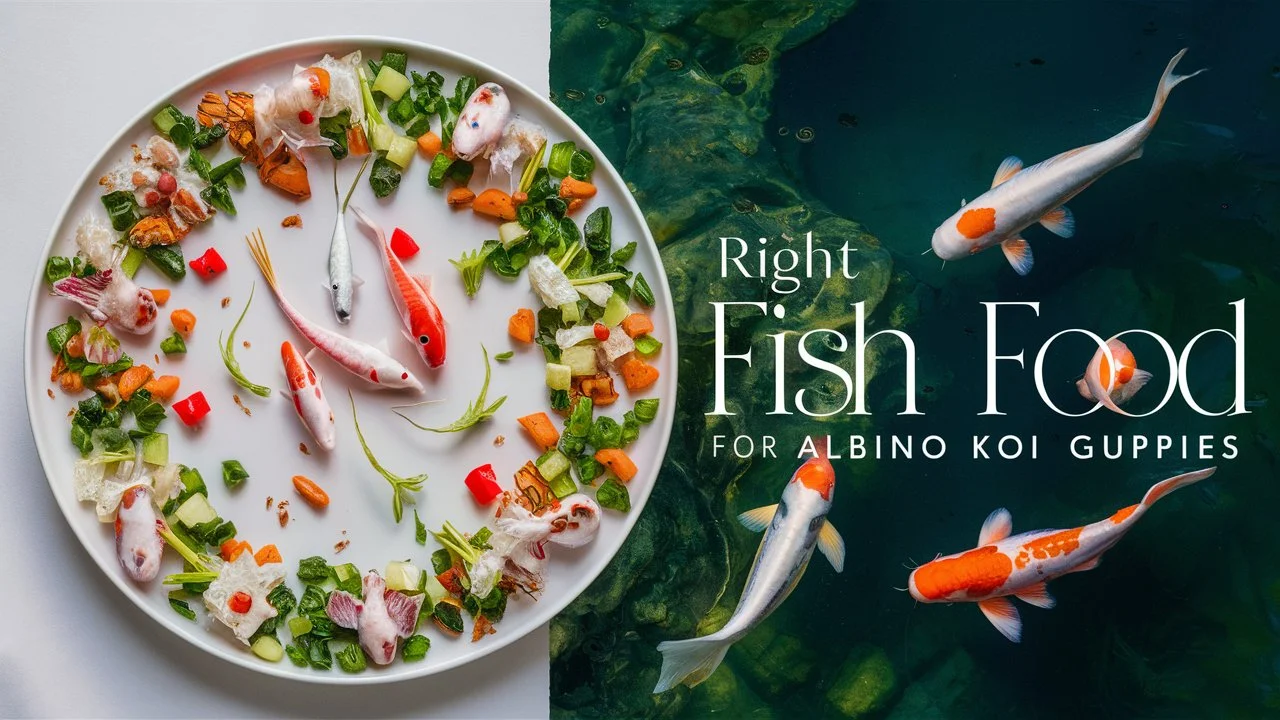
Types of Fish Food
- Flake Food
- Easy to Eat: Flake food is easy for guppies to eat. It floats on the water, and guppies can nibble on it.
- Balanced Nutrition: Many flake foods are made to provide a balanced diet. They have the vitamins and minerals your guppies need.
- Pellet Food
- Sinks Slowly: Pellet food sinks slowly, which is good because guppies can eat it as it falls.
- Small Size: Choose small pellets that are easy for your guppies to eat. Make sure they are not too big for their mouths.
- Live Food
- High Protein: Live food like brine shrimp, daphnia, and mosquito larvae are high in protein. This helps your guppies grow strong.
- Fun to Hunt: Guppies enjoy hunting live food. It keeps them active and happy.
- Frozen Food
- Convenient: Frozen food like brine shrimp and bloodworms are easy to store and use. Just thaw them before feeding.
- Nutritious: Frozen food retains a lot of its nutrients, making it a healthy option for your guppies.
Feeding Tips
- Feed Small Amounts: Give your guppies small amounts of food at a time. They should be able to eat all the food in 2-3 minutes. This helps prevent overfeeding and maintains a clean tank.
- Feed Multiple Times a Day: It’s better to feed your guppies small amounts several times a day instead of one large feeding. This mimics their natural eating habits.
- Variety is Key: Mix different types of food to ensure your guppies get a balanced diet. A variety of food keeps them interested and provides all the nutrients they need.
- Observe Your Fish: Watch how your guppies eat. If they seem uninterested or if there is leftover food, you might be giving them too much. Adjust the amount accordingly.
- Keep the Tank Clean: Remove any uneaten food from the tank to keep the water clean and healthy. This helps prevent the buildup of harmful bacteria.
Special Treats
- Vegetables: Guppies also enjoy vegetables like peas, spinach, and lettuce. Blanch the vegetables (boil briefly) and cut them into small pieces before feeding.
- Special Treats: Occasionally, you can give your guppies special treats like freeze-dried food or homemade fish food. These treats can add variety and excitement to their diet.
By choosing the right food and following these feeding tips, you can ensure your Albino Koi Guppies stay healthy, vibrant, and full of energy. A good diet is the key to keeping your fish happy and thriving.
How Often Can Albino Koi Guppies Have Babies?
Albino Koi Guppies are known for their ability to reproduce frequently. Here is a detailed look at how often they can have babies and what factors influence their breeding.
Frequency of Births
Albino Koi Guppies can have babies, also known as fry, quite often. Typically, a female guppy can give birth every 4 to 6 weeks. This means that in a year, a single female guppy can produce several batches of fry.
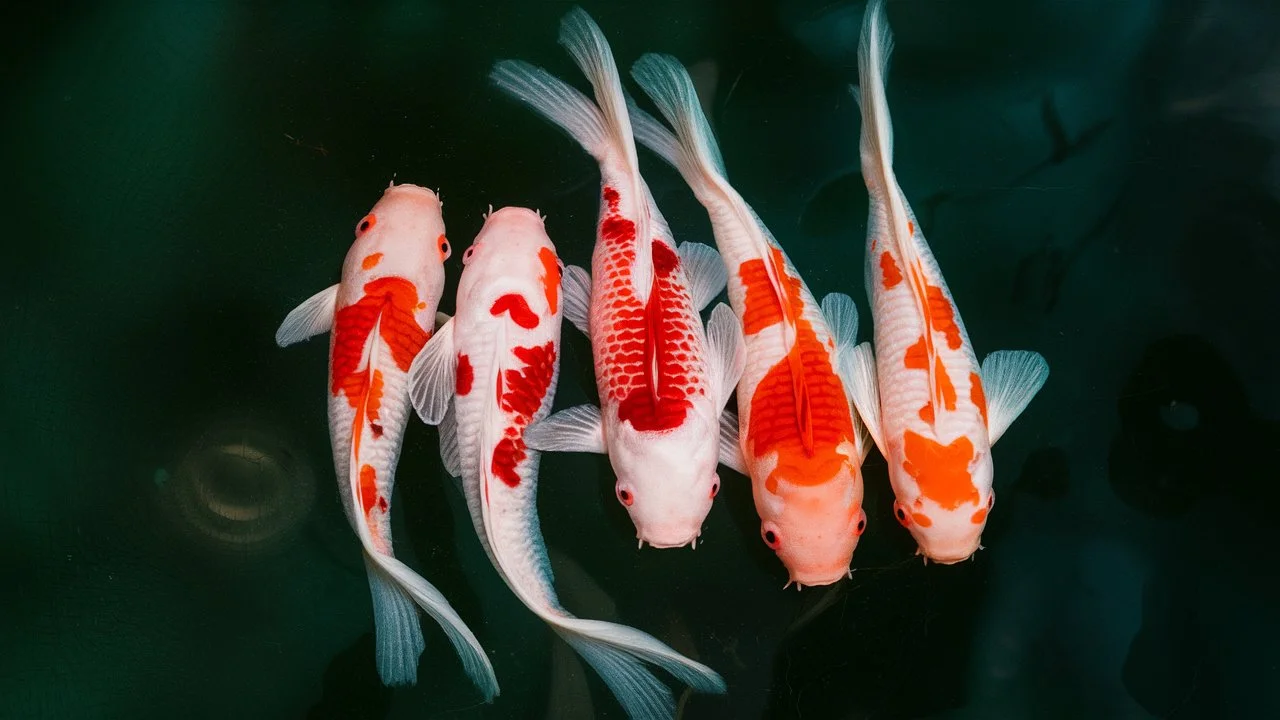
Factors Influencing Breeding
- Age and Health: Healthy, mature female guppies can start having babies when they are around 3 to 4 months old. Their ability to reproduce frequently continues for most of their lifespan, provided they are kept in good health.
- Water Conditions: Good water quality is essential for successful breeding. Keeping the tank clean with regular water changes and maintaining the right temperature and pH levels will support the health and breeding of your guppies.
- Diet: A balanced diet rich in nutrients helps guppies stay healthy and ready to breed. Feeding them a variety of foods, including high-quality flake food, pellets, and occasional live or frozen foods, is beneficial.
- Environment: Providing a stress-free environment with plenty of hiding spots, such as plants and decorations, encourages breeding. Male guppies can be persistent when chasing females, so having places to hide reduces stress for the females.
Signs of Pregnancy
- Gravid Spot: A dark spot near the rear of the female guppy, known as the gravid spot, becomes more noticeable as she gets closer to giving birth.
- Swelling: The female’s abdomen will swell as the fry develop inside her.
- Behavioral Changes: Pregnant females may become less active and seek hiding spots as they prepare to give birth.
Care for Fry
Once the babies are born, they need special care to survive and grow:
- Separate Tank: If possible, move the pregnant female to a separate breeding tank before she gives birth. This helps protect the fry from being eaten by adult fish.
- Hiding Spots: If a separate tank is not available, ensure there are plenty of plants and hiding spots in the main tank for the fry to hide.
- Feeding: Feed the fry high-quality, finely crushed flake food or specially formulated fry food. They need small, frequent meals to grow healthy.
By providing the right conditions and care, your Albino Koi Guppies can successfully breed and raise healthy fry, adding new life to your aquarium regularly.
Common Health Issues and Treatment of Albino Koi Guppies
Albino Koi Guppies, like all fish, can face various health issues. Understanding these common problems and how to treat them can help keep your guppies healthy and happy.
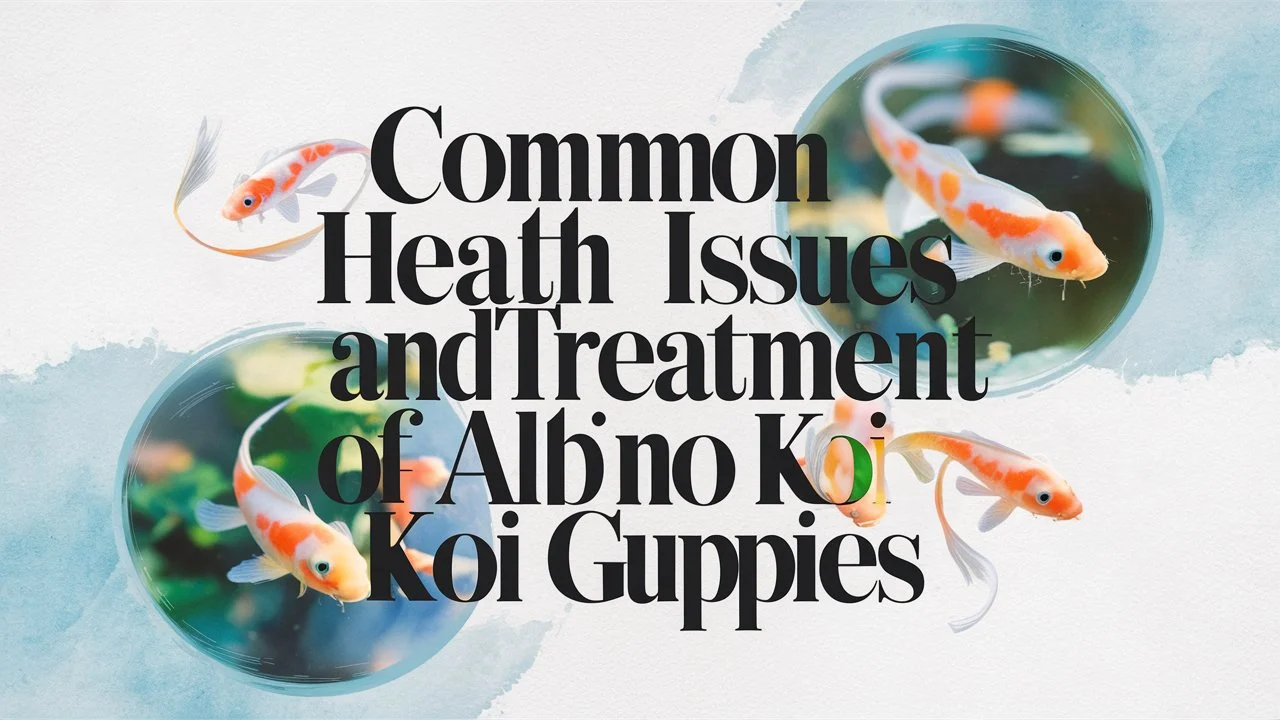
1. Ich (White Spot Disease)
Symptoms:
- White spots on the body and fins
- Rubbing against objects
- Rapid breathing
Treatment:
- Raise the water temperature gradually to 80-82°F (27-28°C).
- Add 1 tablespoon of aquarium salt for every 5 gallons of water.
- Use over-the-counter ich treatment from a pet store, following the instructions carefully.
- Maintain good water quality and continue treatment for at least a week after symptoms disappear.
2. Fin Rot
Symptoms:
- Frayed or disintegrating fins
- Red or white edges on fins
- Lethargy
Treatment:
- Improve water quality with regular water changes.
- Remove any sharp objects that could damage fins.
- Use antibacterial medication available from pet stores.
- Isolate affected fish if possible to prevent the spread.
3. Swim Bladder Disease
Symptoms:
- Difficulty swimming or staying upright
- Floating to the surface or sinking to the bottom
- Swollen abdomen
Treatment:
- Avoid feeding for 24-48 hours.
- Feed deshelled, boiled peas as a natural laxative.
- Check for water quality issues and adjust if necessary.
- Maintain a varied diet to prevent constipation.
4. Velvet Disease
Symptoms:
- Gold or rust-colored dust on the body
- Clamped fins
- Loss of appetite
- Rapid breathing
Treatment:
- Raise the water temperature to 82-84°F (28-29°C).
- Turn off the aquarium lights to reduce stress.
- Use copper-based medications specifically designed for velvet disease.
- Maintain good water quality and follow the treatment instructions for the duration recommended.
5. Bacterial Infections
Symptoms:
- Red streaks or sores on the body
- Swollen abdomen
- Fuzzy growth on the skin
Treatment:
- Quarantine affected fish if possible.
- Use antibacterial medications from pet stores.
- Improve water quality with frequent changes and filtration.
- Ensure a balanced diet to boost the immune system.
Prevention Tips
- Maintain Good Water Quality: Regular water changes, proper filtration, and monitoring of water parameters (temperature, pH, ammonia, nitrites, and nitrates) are essential.
- Balanced Diet: Feed your guppies a varied and balanced diet to keep their immune system strong.
- Avoid Overcrowding: Overcrowding can lead to stress and increase the risk of disease. Ensure your tank provides enough space for all the fish.
- Quarantine New Fish: Before introducing new fish to your tank, quarantine them for a few weeks to ensure they are not carrying any diseases.
- Regular Observation: Keep a close eye on your guppies for any signs of illness. Detecting and treating illnesses early is essential to prevent the spread of disease.
By understanding these common health issues and their treatments, you can ensure your Albino Koi Guppies stay healthy and vibrant, adding beauty and life to your aquarium.
Conclusion
Albino Koi Guppies are a vibrant addition to any aquarium, costing between $3 to $20 each. They live for about 2 to 3 years and thrive on a balanced diet of flake food, pellets, and occasional live or frozen food. These guppies can breed every 4 to 6 weeks, making them prolific breeders. To keep them healthy, maintain clean water, a comfortable tank environment, and watch for common health issues like Ich and fin rot. With proper care and understanding of their needs, you can enjoy a lively and colorful aquarium with Albino Koi Guppies.
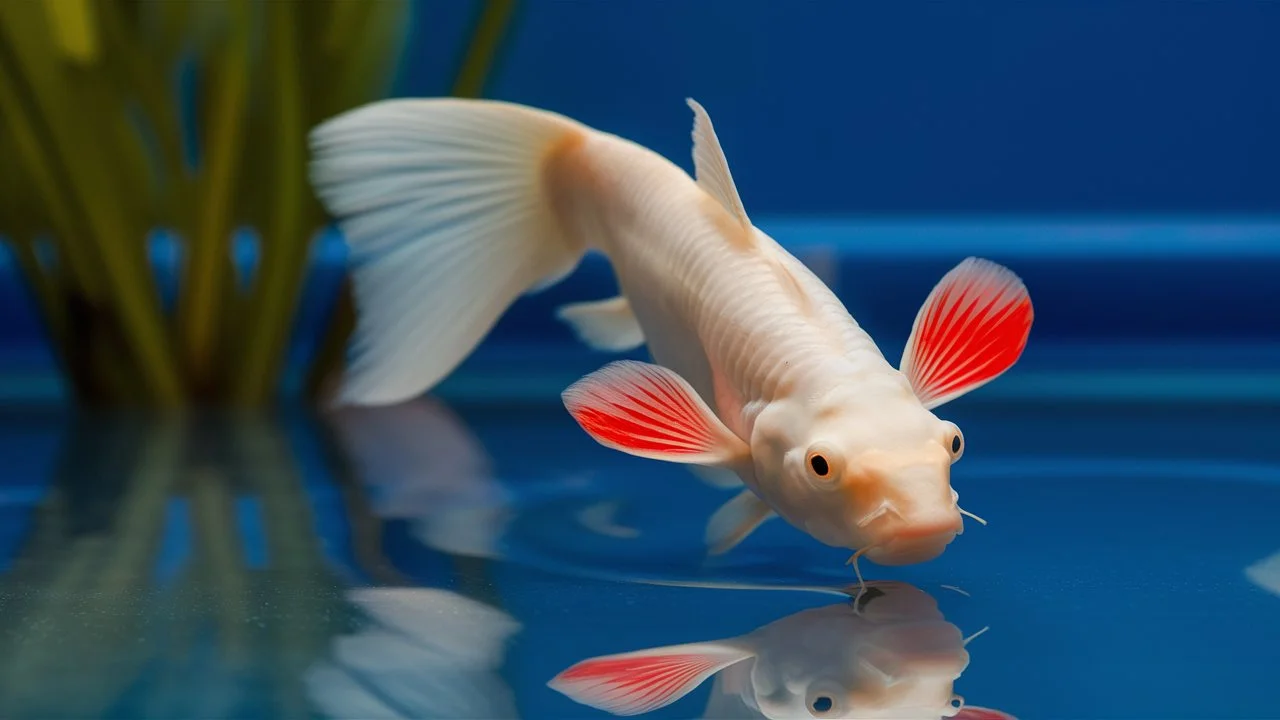
1 thought on “Albino koi guppy Cost:Lifespan, food, Breeding & Health”